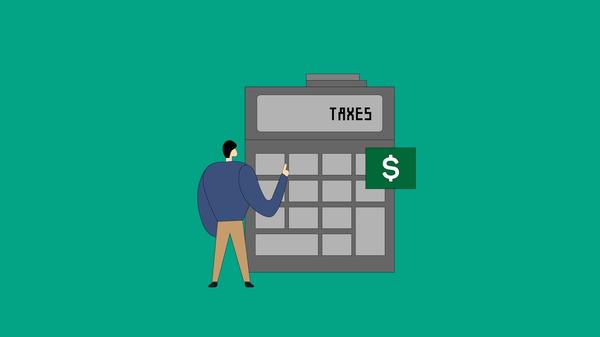This is a guest post from Enoch Omololu from Savvy New Canadians, a personal finance website dedicated to discussing relevant personal financial information as it relates to money, investing, freedom from debt, frugal living, entrepreneurship, productivity, creating multiple streams of income, and much more.
Investing is one of the greatest equalizers of all time.
By putting money aside in a portfolio of stocks or Exchange Traded Funds (ETFs), playing the long game and banking on the magic of compound interest, even the Average Joe can join the millionaires club.
It used to be that you needed to be "qualified" as an investor, be rich, or be willing to pay big bucks, in order to access real money-making investment assets. However, all that is changing fast.
These days, pretty much anyone can use a discount brokerage account to buy and sell investment products.
Even better, investment tools such as Passiv have made the investment process hassle-free by automating your portfolio rebalancing and saving you on fees.
Let us take a look at the various investment accounts available in Canada and how you can use them.
1. Registered Retirement Savings Plan (RRSP)
Since its introduction in 1957, the Registered Retirement Savings Plan (RRSP) has served as a great tool for helping Canadians save towards retirement.
An RRSP is registered with the federal government and offers a tax deduction for every contribution you make to your account. This allows you to lower your taxes today while maximizing the growth in your account. Taxes are payable when you start to make withdrawals in the future.
Each year, you get a contribution limit that is 18% of your earned income up to a maximum amount. And, you can put your contributions to work by making use of various RRSP investments including ETFs, stocks, bonds, mutual funds, and Guaranteed Investment Certificates (GICs).
RRSP Facts:
- The maximum RRSP deduction limit for 2020 is 18% of your income up to $27,230 (it was $26,500 in 2019).
- Unused RRSP contribution room can be carried forward to future years.
- You can contribute to an RRSP until you turn 71 when it must then be closed and either withdrawn as cash, converted to a RRIF, or used to purchase an annuity (you can also do a combination of all three).
- Tax-free withdrawals from your RRSP are allowed for buying a home (Home Buyers Plan) or to pay for post-secondary education (Lifelong Learning Plan).
- The types of RRSP accounts include individual, spousal, group and pooled RRSPs.
2. Tax-Free Savings Account (TFSA)
Introduced in 2009, a Tax Free Savings Account (TFSA) is a registered account that allows Canadians to earn tax-free gains for life.
Given the name, a TFSA is often misunderstood to be all about putting money in a TFSA savings account and earning interest income.
This is not accurate as you can also use financial products like ETFs, mutual funds, stocks, bonds, and earn dividends, capital gains and more.
TFSAs are available to Canadian residents who are 18 years or older and have a valid social insurance number.
TFSA Facts:
- Interest, capital gains, and dividends earned on your TFSA are tax-free even when withdrawn.
- The TFSA annual contribution limit for 2020 is $6,000. If you have been eligible to contribute to a TFSA since its inception in 2009, you total contribution limit is now $69,500.
- Unused TFSA contribution room can be carried forward to future years.
- TFSA withdrawals can be re-contributed in the following year without penalty.
- Over-contributing to your TFSA will cost you a 1% penalty tax per month until the excess amount is withdrawn.
Similar to an RRSP, a TFSA can also be used to save for retirement. If you have to choose between either account, here's a breakdown of TFSAs vs. RRSPs.
3. Registered Education Savings Plan (RESP)
A Registered Education Savings Plan (RESP) is a savings plan that helps save for your child's post-secondary education.
RESPs were first introduced in 1998 and allow you to contribute up to a maximum of $50,000 per child.
In addition to your contributions, the government provides 20 cents on every dollar you contribute up to a maximum of $500 per year. This matching grant is referred to as the Canada Education Savings Grant (CESG) and applies to your first $2,000 in contributions every year.
Your child's RESP account grows tax-free until they start making withdrawals.
Common RESP investments including stocks, bonds, GICs, mutual funds, ETFs, and cash.
RESP Facts:
- The lifetime contribution limit per child is $50,000 and the lifetime maximum CESG you can receive is $7,200.
- When grant money and income earned is withdrawn by your child, they must declare it as income on their tax return. This withdrawal is known as an Educational Assistance Payment (EAP).
- Unused RESP contribution room and CESG can be carried forward to future years.
- Low-to-moderate income families may qualify for additional grant money through the Canada Learning Bond.
- An RESP account can stay open for up to 35 years after it is opened.
- You can open an individual, family, or group RESP account.
4. Non-Registered Investment Account
All three accounts mentioned above are registered plans and allow you to grow your money tax-free...either on a tax deferral basis (e.g. RRSP and RESP), or for a lifetime (e.g. TFSA).
A non-registered account does not offer this perk, however, it has its own advantages. A best-case scenario is one where you can maximize both registered and taxable investment accounts.
Non-registered investment accounts are flexible and do not place a limit on how much you can invest or the investment products you can utilize. There is also no age limitations.
You can open a variety of non-registered investment accounts including personal, joint and corporate accounts.
Since income earned on your account is considered as taxable income, you can deduct any interest paid if you use loans or leverage to invest.
Lastly, when losses are realized in your non-registered account, it is easy to offset capital losses with capital gains and carry them forward indefinitely to claim against future gains.
Types of Investments To Consider in Canada
There are various types of investment products and financial instruments you can consider for your investment portfolios.
When it comes to registered accounts, you should limit yourself to "qualified" investments such as:
- Stocks
- Bonds
- Mutual Funds
- Exchange-Traded Funds
- Treasuries
- Guaranteed Investment Certificates
- High-Interest Savings Deposits
While you can also invest in warrants, options, precious metals, annuities, small business shares and debt obligations, there are rules and conditions you should be aware of.
There's a lot more flexibility when it comes to investing in a non-registered account. In addition to the traditional financial investments listed above, you can veer off the beaten path and utilize alternative assets including those sold Over-the-Counter (OTC) and even cryptocurrencies.
How To Invest in Canada
To wrap things off, how can you go about investing for retirement or your child's post-secondary education in Canada?
The options range from using your bank or credit union's mutual fund to self-directed investing (aka DIY investing). There is also a middle-of-the-road approach with robo-advisors.
Let's break it down.
Banks and Traditional Mutual Funds
You can schedule an appointment with an investment advisor at your bank. After taking you through an investment profile, they recommend a mutual fund portfolio that matches your risk profile and investment objectives.
While this option is generally hassle-free, you typically end up paying comparatively higher investment fees. And, over time, fees impact your total returns.
Robo-Advisor Investing
Canadian robo-advisors are online wealth managers that utilize computer algorithms to design low-cost, diversified, ETF portfolios.
These digital platforms offer hands-free investing, automated rebalancing, tax-loss harvesting, and free financial advice at a lower fee compared to traditional investment advisors and banks.
Robo-advisors are the middle ground between expensive funds and DIY investing, and they can help you save money if you are not yet ready to go it alone.
Self-Directed Investing
This option puts you in the driver's seat and you can choose what assets you keep in your portfolio.
You can easily trade stocks and ETFs in Canada using online brokers such as Questrade. Questrade also offers options, foreign exchange, mutual funds, precious metals, and GICs.
A big advantage of self-directed investing is that you can cut your investment fees significantly and potentially increase your returns over time.
While this approach requires that you be comfortable with asset allocation, stock/ETF analysis, and rebalancing, a tool like Passiv can make your work a lot easier.


